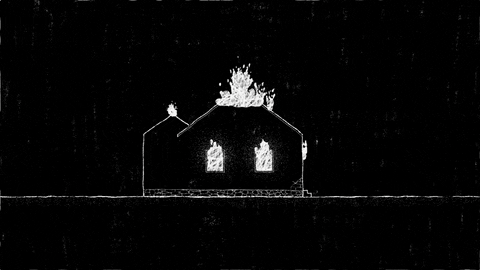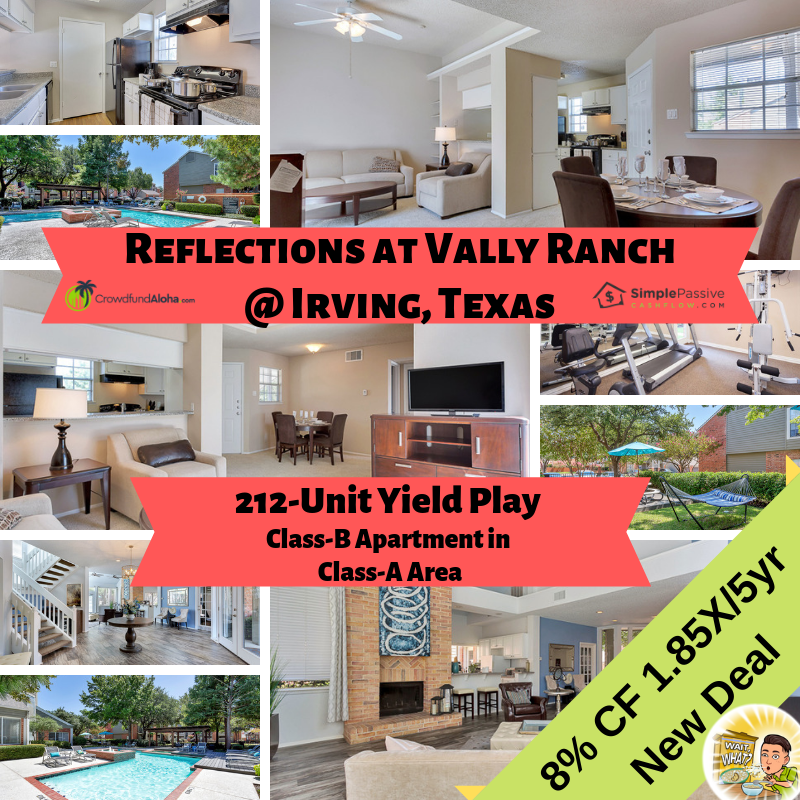Pros of Syndications
The above video was at our apartment which caught on fire while we were in contract at our 212-Unit apartment in Irving, Texas.
🔥 13 units in 1 building were damaged. Some of the residents had to seek help from Red Cross. Thankfully, no one was hurt.
Why I love Commercial Real estate investing over Mom & Pop SFH investing is because even if we were owners it would still pan out to be a positive for us because our insurance covers loss rents and damages. In this case, we were in contract for this property, and our elegantly crafted purchase agreement for the property and gives us options to renegotiate or walk away with no penalties.
This event could actually work to our advantage. So when I heard the news I was very excited as opposed to most unsophisticated investors.
This is actually the second time I have had a large fire claim. The first one was $400,000 on our 114-unit in Atlanta, Georgia. Insurance will cover the damage and loss rent. We have claims experts we consult with (pay) to get the best deal for us as opposed to getting steamrolled by an insurance company as a Mom & Pop investor.
On another smaller apartment, we had a tree smash our roof which made 11 people displaced into alternative lodging (hotels). Insurance paid all that, loss rents when the tenants came back to a fully rehabbed unit (that might have been over rehabbed a tad)?
Hail is a big deal in most midwest and Texas markets and there is a bit of a loophole to get brand new roofs if you have some signs of hail damage.

Here is a short list of some of the major impacts we have faced so far:
1) At least 5 documented fires (three of which burned down the structure – here was one of them that we eventually sold for 129% Total Return or 2.29X Equity Multiple – over the 2.5 year ownership period, that equated to an IRR of 32%)
2) Two full front hurricanes
3) Multiple tornados (these are the easiest and the least of our worries because they are the simplest claims and isolated incidents plus there is much city support when it happens)
4) One tree falling on a roof, taking out a dozen units
5) And a freak ice storm in Texas – who knew!
In progress rebuild of our our Irving property that burned down. Upgraded from 1990s to 2022 standards!
Consider the following:
1) We carry adequate insurance coverage. Even more so than we would feel is cost-effective but is mandated by the uber-conservative bank to over-insure the asset where they have the greatest amount of interest in the capital stack.
2) As with all disasters, we carry commercial-level insurance which includes loss rents. The only trouble here is paying for costs out of our operating account in the period between when the insurance company checks are cut to us the owner. This is why we have adequate working capital, cash reserves, and the sponsors are personally well-capitalized to minimize the chance for a capital call. Even in that extreme circumstance, we have countless ways to cut costs which is why we invest in this type of asset class. In past cases, units have been out of service for weeks or months however in a way we are “off the clock” racking up our loss rent checks even though the units are not occupied.
3) We always get third-party claims adjusters to maximize the claim paid to us. In our experience, we have gotten up to 2-3x what the claim settlement was originally proposed. Most amateur operators would accept these… I know when I was a single-family home investor from 2009-2015 I would have done just that and would not have the capital to pay for a claims adjustor plus the claims adjustor would not want to work my small claims anyway. In many cases, we come out ahead of where we started before the unfortunate incident! Once we were able to use a “hail storm” to get brand new roofs with just the $5,000 deductible on our already perfectly fine roof. Although we are not thrilled when any instance takes place because it stresses our asset management team’s bandwidth temporality. (it’s our job, we know!) We are cautiously optimistic that we can come out ahead!
4) When we had the unprecedented ice incident in Texas in 2021 and all the little mom and pop amateur landlords were frantically bugging their overwhelmed property managers who were trying to find any plumber in town, we were knocking out our own work orders with our in-house maintenance staff. This was a great example of our staff’s ability to be self-sufficient, of course, we do share human resources and some supplies if needed among assets in the same metro.
5) One of our fires burned down an entire building under construction. In this circumstance, it puts us in a better position because at that point, the GC owns the delivery of the final product and they are ensuring the completed product. Although it is not our job as the owner, Lane’s attitude when he was in the construction industry was that every contractor/owner wants a completed project to move on to the next one and as the owner we want the contractor to complete the project in such fashion to make a fair profit so we can do business again. It comes down to honor. So we do our part to ensure contractors are not cutting corners to ensure a properly paid insurance claim (which would probably result in a huge loss or bankruptcy by the CG) by doing the little things like recommending and in some cases paying for wifi security cameras to keep an eye on expensive materials like lumbar, quality assurance to ensure safety protocols are met, and communicating with municipalities site impacts we feel its the right way to do business and that we are all accountable to a project that is on time, on budget, and meets expectations. Lane spent 12 years as an engineer mostly on the owner’s side overseeing construction and unfortunately, a lot of it was on the boring side ensuring the project was covered insurance wise, documentation, arguing unforeseen conditions with contractors… or in other words a lot of the stuff that had to be done due to the existence of lawyers and natural disasters/acts of god/human factors errors.
Overall, passive investors should not worry about specific events, and why we always recommend diversifying your portfolio with not more than 5-10% of your net worth into any one deal. By doing that you can relax and let your GP (who is incentivized to achieve the same goals) do the stressing and leg work that is necessary to manage the asset (and property management team) to maximize the returns.
Look we know the tricks! And the best thing is as an LP investor you DON’T DO ANYTHING. You just sit back as we use our connections and experience on your behalf. We quit our JOBs so you don’t have to (if you don’t want to).
When I was a single-family home Mom & Pop investor I got abused by my insurance company in so many incidences and in this one particular case where they did not pay a penny of my $37,000 in damages a tenant left for me. Which I just unloaded in 2019!
If we have not connected set up a call and see how you can join us and invest with the pros. Investing is an unfair game.

How Do I Get Involved in the Next Partnership Opportunity?
Deals will be sent out via email (like the sample below). You need to be quick as most deals get filled up in 1-3 weeks. The process is to go to that deal’s info page and fill out a soft reserve form to acknowledge that you are interested so we can get documents out to you for review.
To see the difference in person between a B vs C class location and asset cannot be replaced… but once you do you never have to do that again! 😁 We recommend investors come out on at least one property tour to see the assets and meet the people. That said most busy LPs will not come out to visit the properties which is why this numbers section is so critical.
Check Out a Past Deal Alert!

Projected Investor Returns:
Investor total profit: 85%
Annual cash on cash Preferred cashflow: 8%
Sponsor and Investor Split: 20/80, after 85% profit to investors it becomes 30/70
Minimum investment: $75,000
Conservative Underwriting Assumption:
Exit CAP rate assumption: 6.25% (current submarket 5%)
Rent annual increase after stabilization: 2% (current submarket 4.8%)
Stabilized economic occupancy rate: 91% (current submarket 93.2%)
Fantastic New Loan with Community Bank:
75% LTV, non-recourse
10 year fixed with 2 year I/O
4% interest rate
NO prepayment penalty!

FAQ’s
$400-$450k.
You own a share in the company which is equity.
Because we have a GP/LP split as 20%/80%. Let’s say you invest 100k into a deal that needs 10M capital from investors.
You will own 0.8% of the deal. 100k/10M*80% = your portion of ownership.
So you just essentially added .8% x 212 = 1.7 units
You can also go out and get 1.7 units on your own but with a lot more headaches.
Yes!
